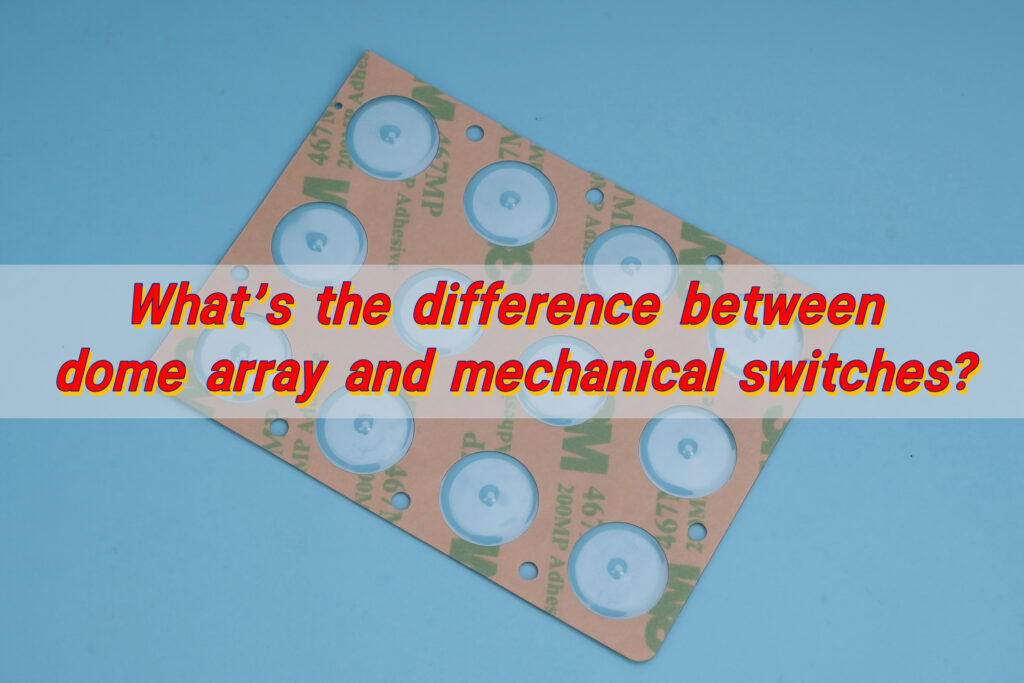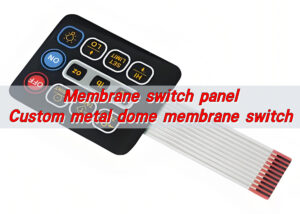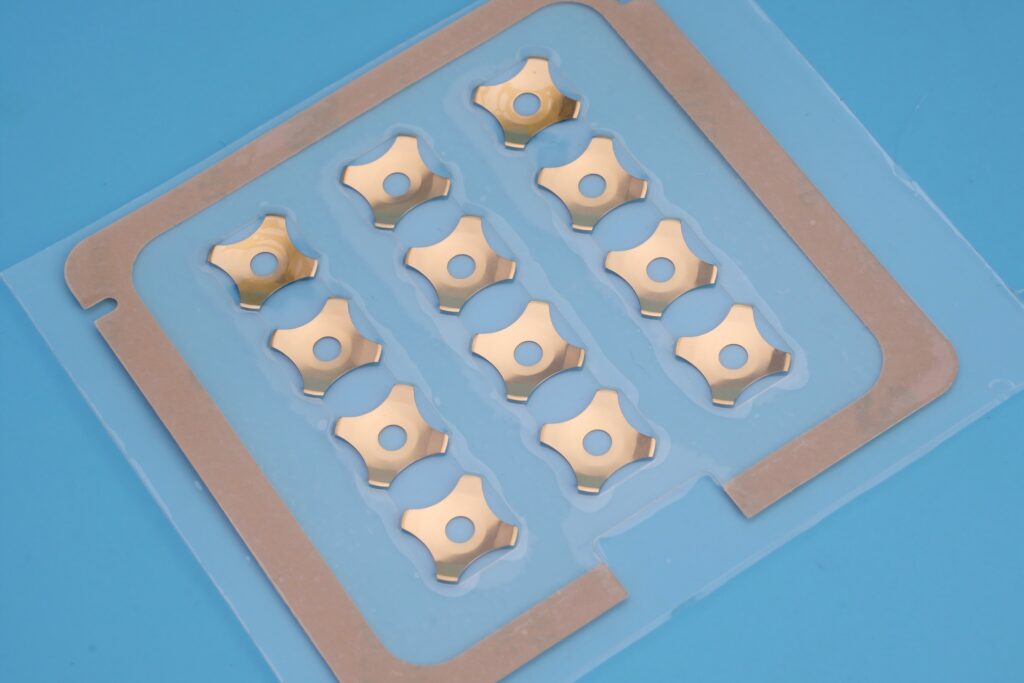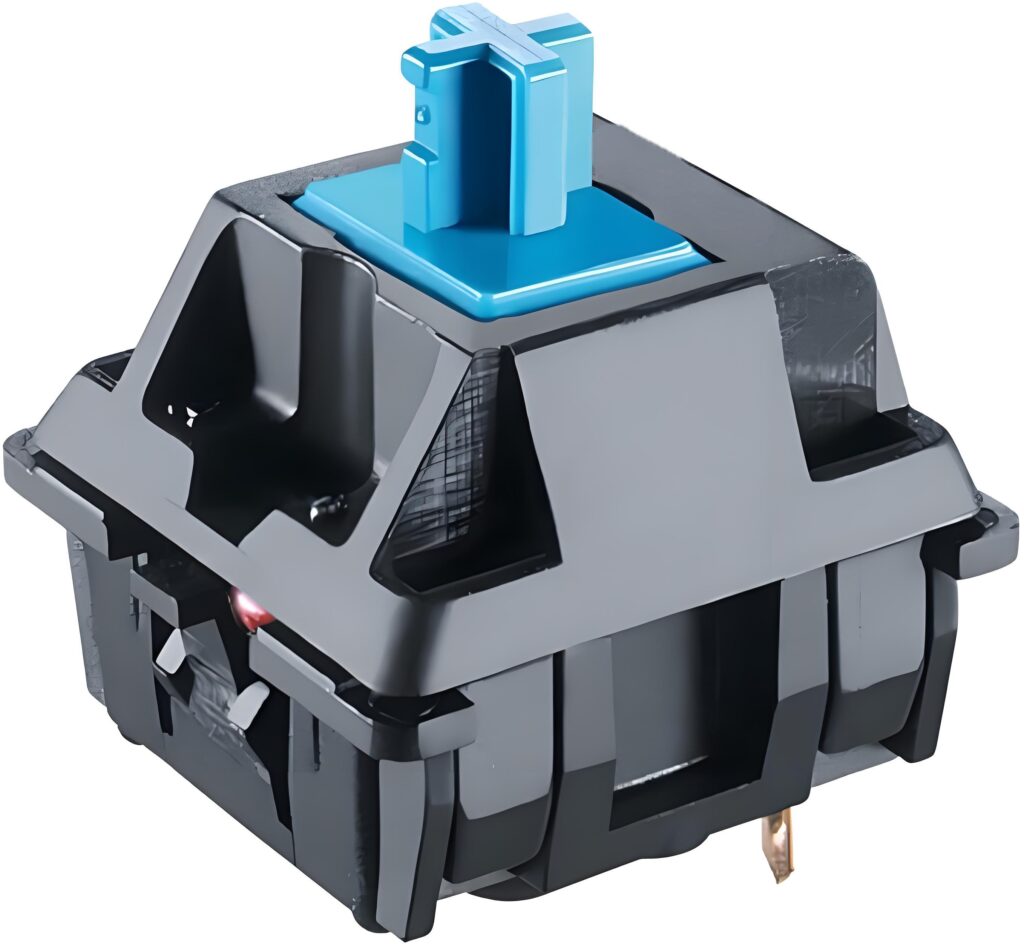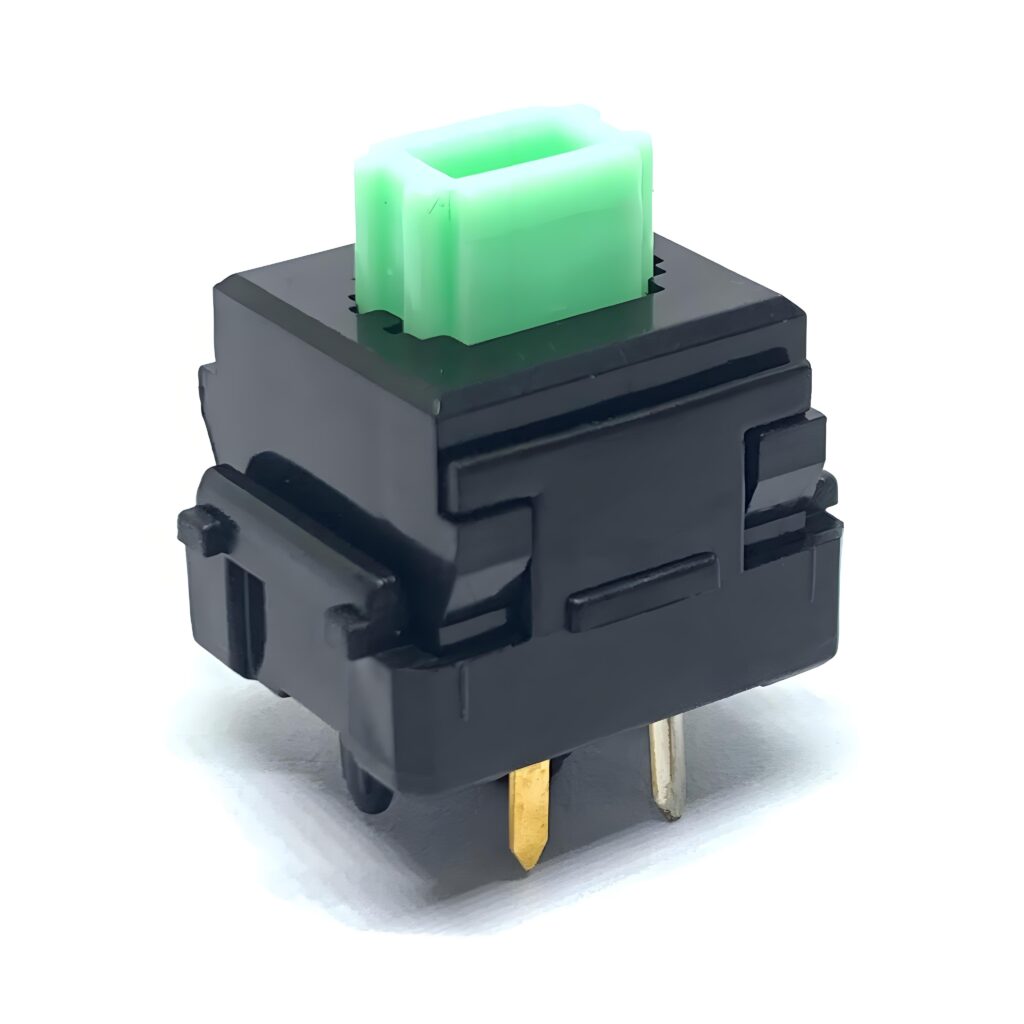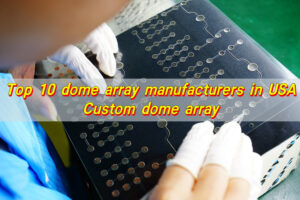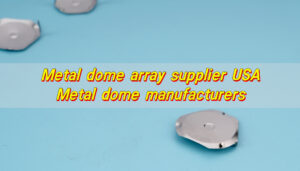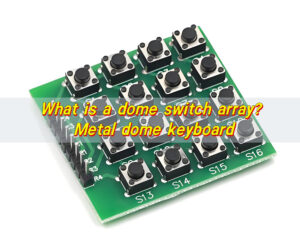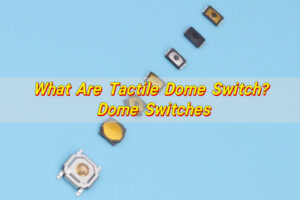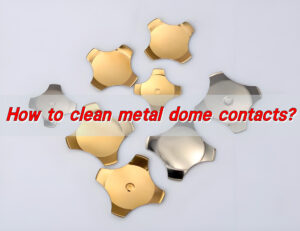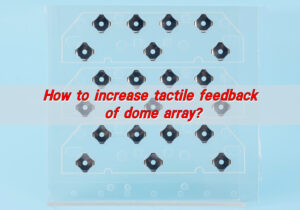Dome arrays and mechanical switches differ in design and feel. A dome array uses metal domes under a flexible surface, giving a crisp tactile response in a thin, sealed structure—ideal for custom membrane switches. Mechanical switches, however, use individual spring mechanisms for each key, offering a deeper keystroke and longer life but at higher cost and size. Dome arrays are preferred for compact, reliable, and customizable applications.
What are dome switches?
Dome switches, sometimes called dome arrays, are a popular choice in modern electronics. They are small, lightweight switches made from a flexible material, usually metal. These switches are designed in a dome shape that collapses when pressed, creating an electrical connection beneath the surface.
The appeal of dome switches lies in their simplicity. They are compact, cost-effective, and provide reliable performance in a variety of applications. Dome arrays are often used in membrane keyboards, remote controls, calculators, and many consumer electronics. The flexibility of the dome allows it to fit compact designs where space is limited, making them highly versatile.
Compared to mechanical switches, dome switches are quieter, lighter, and easier to integrate into thin devices. They come in various materials such as stainless steel, copper, or polymer-coated metal. Each material influences the tactile feel, durability, and overall response of the switch.
How do dome switches give tactile feedback?
One of the standout features of dome switches is their tactile feedback. Dome switches give a noticeable “click” or resistance that signals to the user that the key press has been registered.
The tactile feedback comes from the dome’s unique design. When you press the dome, it collapses and completes the electrical circuit. This collapse provides a mechanical sensation—the subtle snap—that your fingers can feel. The feedback is usually softer than a mechanical switch but still distinct enough to prevent mis-presses.
Additionally, the tactile feel can be customized. This flexibility is why dome arrays are often preferred in devices where quiet operation is important, such as laptops or medical devices.
How does a dome switch work?
Each dome acts as a spring. Under normal conditions, the dome sits above a contact pad without touching it. When pressed, the dome collapses and touches the contact area beneath, completing the circuit.
Once released, the dome returns to its original shape, ready for the next press. The return action is due to the elasticity of the dome material, which ensures consistent performance over thousands of presses.
Some dome arrays feature a conductive coating or a thin metal layer that improves signal reliability. Others are purely metallic, providing a stronger tactile “click” and a longer lifespan. The key advantage of dome switches is the balance between tactile feedback, reliability, and manufacturing simplicity.
Because the dome only requires a single press to register, it is excellent for rapid typing or repeated key presses without fatigue. In comparison, some mechanical switches may require a stronger force, making dome arrays easier on the fingers for prolonged use.
What is the difference between mechanical and dome switches?
Understanding the distinction between mechanical switches and dome arrays is critical.
Mechanical switches use individual moving components like springs and stems. Each key has a dedicated mechanism that moves when pressed, creating a highly precise tactile response.
In contrast, dome switches rely on the flexible collapse of the dome to complete the circuit. There are fewer moving parts, making them lighter and quieter. While mechanical switches often feel more pronounced, dome arrays provide a subtle yet satisfying feedback without loud clicks.
Other key differences include:
- Durability: Mechanical switches are known for their long lifespan, often rated for 50 million presses or more. Dome switches typically last 1–5 million presses but are improving with modern materials.
- Cost: Dome arrays are cheaper to manufacture, especially in large volumes. Mechanical switches can be costly due to complex assembly.
- Noise: Dome switches are quieter, making them ideal for offices or public spaces. Mechanical switches can be loud, which some users enjoy, but others find disruptive.
- Size: Dome arrays fit into thinner devices, while mechanical switches require more vertical space.
Ultimately, the choice depends on the desired feel, noise level, cost, and application.
What are the disadvantages of mechanical switches?
For one, they are typically larger and heavier, which limits their use in slim devices. Their complex structure makes them more expensive to produce.
Additionally, the louder operation of some mechanical switches can be bothersome in shared spaces. Some users also report fatigue over long typing sessions with stiff mechanical switches, although this depends on switch type.
Despite these minor drawbacks, mechanical switches excel in applications requiring precise feedback, high durability, and a satisfying click.
When should you choose dome array over mechanical?
Choosing between a dome array and mechanical switches depends largely on the application and user preference. Here are scenarios where dome switches shine:
- Compact Designs: Devices with limited space benefit from the low profile of dome arrays. Laptops, handheld devices, and remote controls are common examples.
- Cost Efficiency: For high-volume production, dome arrays reduce manufacturing costs while maintaining reliable performance.
- Quiet Operation: Offices, hospitals, and public spaces often require quieter switches. Dome arrays deliver tactile feedback without disruptive noise.
- Durable Enough for Everyday Use: Dome arrays are resilient, handling millions of presses efficiently. Modern materials have extended their lifespan.
- Custom Tactile Feel: Manufacturers can fine-tune the dome shape and coating for softer or firmer feedback, meeting user needs.
If your application doesn’t require the extreme lifespan or heavy tactile feel of mechanical switches, dome switches offer a practical and enjoyable solution.
Dome switch vs conductive rubber: which lasts longer?
Conductive rubber switches are often compared to dome switches, especially in membrane keyboards. Both offer low-profile solutions, but dome switches generally outperform conductive rubber in durability and tactile feel.
Conductive rubber switches can degrade faster under repeated use. The rubber layer compresses and loses elasticity, reducing tactile feedback. Dome switches, particularly those with metal domes, maintain consistent performance over longer periods.
While both switch types are quiet and affordable, dome switches provide a more precise feel and longer service life.
Which switch lasts the longest?
When evaluating switch longevity, mechanical switches top the chart, often exceeding 50 million keystrokes. Metal dome switches can achieve several million presses, significantly outlasting standard conductive rubber switches.
However, advancements in materials and manufacturing have narrowed the gap. Modern dome arrays with metal or hybrid coatings are lasting longer than ever. They now rival some mechanical switches for medium-duty applications while maintaining a lighter touch and quieter operation.
Conclusion:
Dome switches are compact, quiet, cost-effective, and versatile. They provide reliable tactile feedback, customizable feel, and improved durability over conductive rubber. Mechanical switches, on the other hand, offer superior precision, a louder click, and exceptional lifespan, making them ideal for high-performance keyboards or specialized applications.
For inquiries and custom solutions, contact sales@metal-domes.com


